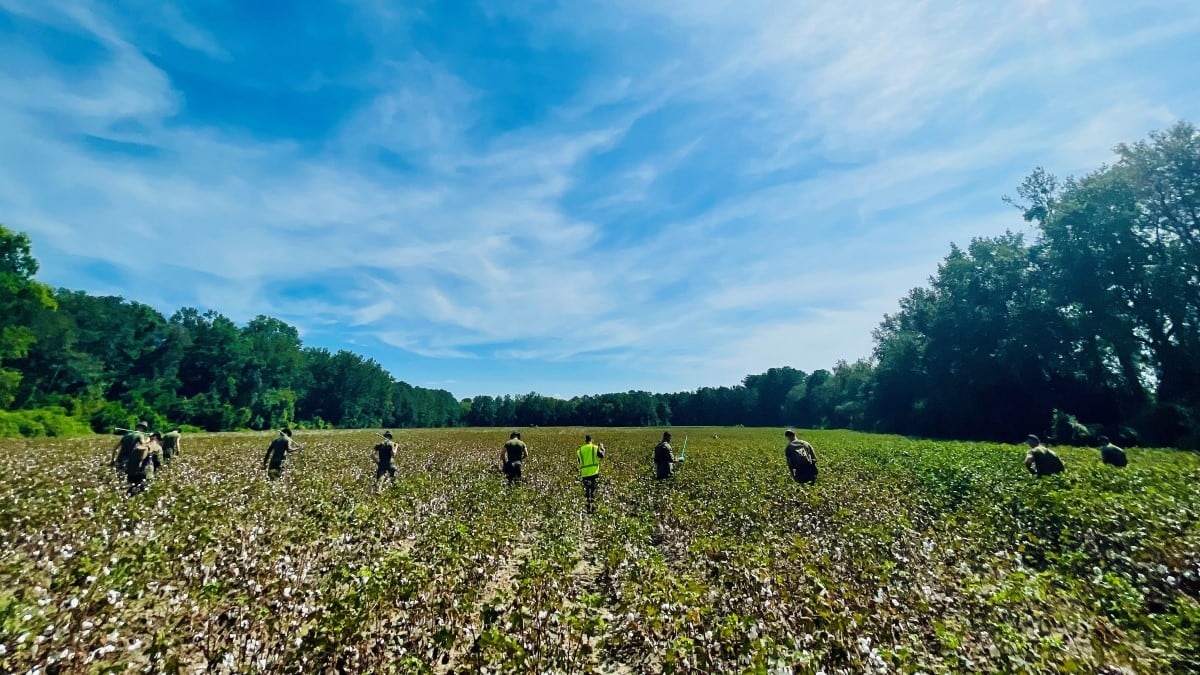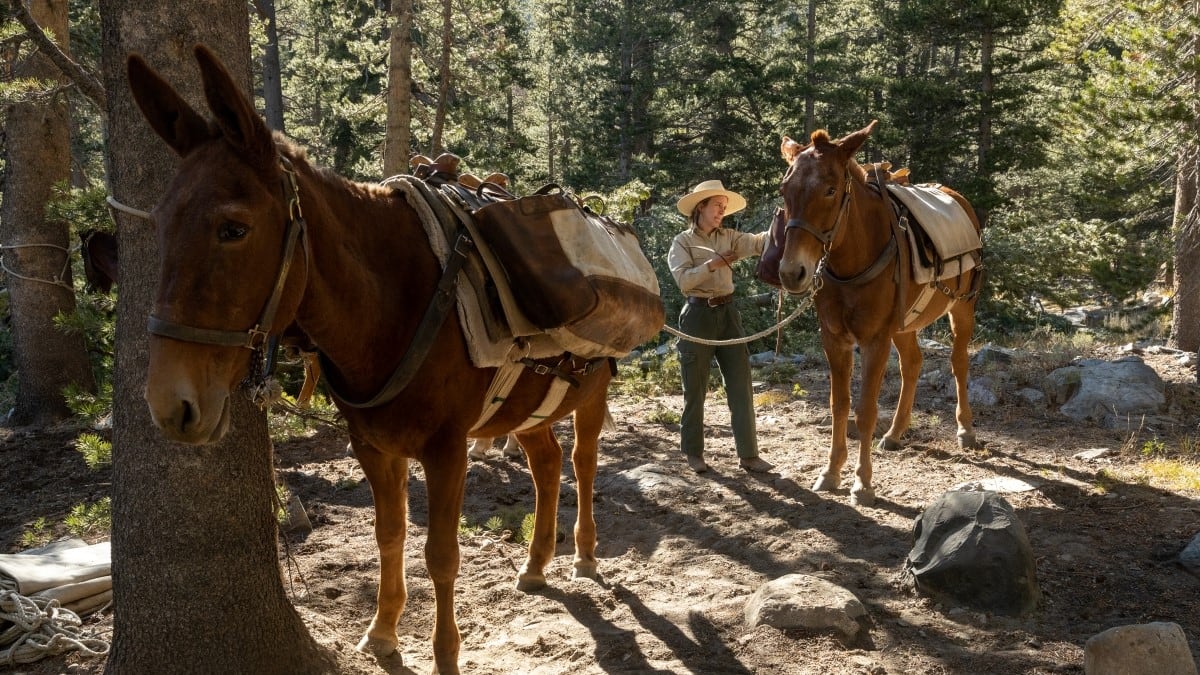A Marine-led team in October recovered what was left of a Navy helicopter that had experienced a hard landing during a rescue mission in the mountains of California.
The massive recovery effort of the MH-60S Seahawk from difficult terrain in Inyo National Forest, California, involved about 40 Marines and sailors, as well as personnel — and mules — from the Forest Service, according to leaders of the Marine helicopter squadron that led the mission.
The Marines relied on the extremely powerful CH-53K King Stallion helicopter, which executed a minuteslong hover close to the mishap site three times.
The downed Navy search-and-rescue helicopter from Naval Air Station Lemoore, California, had been attempting to recover a civilian hiker with a broken ankle on Sept. 30 when it experienced the hard landing, Sarah Thrasher, a spokeswoman for the air station, said Nov. 16. The naval air station has a small team of pilots and aircrew trained in rescuing installation aircraft and personnel, as well as “anyone in legitimate danger,” according to its website.
Members of the four-person Seahawk crew reported minor injuries, but they and the hiker were off the mountain within 12 hours, according to Thrasher. The Navy is investigating the mishap, she said.
RELATED

After aircraft mishaps, the Navy has a responsibility to remove the debris to restore the affected environment to “the best natural state possible,” Thrasher said. The service also wants to protect military aircraft’s proprietary technology and recover debris that it later analyzes as part of its mishap investigations.
Marines from Marine Heavy Helicopter Squadron 461 were in Yuma, Arizona, supporting the Weapons and Tactics Instructor Course in mid-October when they officially got tasked with retrieving the Navy helicopter, commanding officer Lt. Col. Thomas Nicholson said Nov. 16.
The team had to do the mission before cold weather came to Mammoth Lakes, California, when snow could made a recovery more difficult. Snow can show up in the Sierra Nevada region as early as late October, Nicholson said.
Before the Marines could remove the Seahawk from the mountain, they had to do a site survey, Maj. Sean Graham, the squadron’s operations officer, said Nov. 16. Navy Seabees and Marines from 2nd Distribution Support Battalion prepared the downed helo for the recovery, and the Forest Service cut nearby trees.
Complicating these efforts was the remote location of the mishap site, which could be reached on foot only by hiking uphill for five miles, Nicholson said. The road to get to the trailhead was under construction, so the team had access to it for only 20 minutes each morning and evening.
The Forest Service contributed pack mules to haul heavier equipment up the mountain, according to Nicholson.

“A lot of work was done beforehand, and that was probably the primary thing that led to our success,” Graham said.
On Oct. 20, the day of the big recovery, Graham and his crew of Marines flew a CH-53K King Stallion up to the crash site three times. Each time, the heavy-lift helicopter hovered for about four and a half minutes as Marines on the ground from 2nd Distribution Support Battalion attached the debris to the helo’s slings, Graham said.
Working below a close-to-the-ground helicopter, those Marines got whipped with 60–70 mile-per-hour wind, which also sprayed them with debris and cold water from a river, according to Graham.
And the photos taken of the scene don’t capture how close the King Stallion was hovering to the trees and terrain, Nicholson said.
The next complication: The King Stallion had to fly over a major road to get the debris to the Mammoth Yosemite Airport, Nicholson said. What if something dropped onto the cars below?
So once the King Stallion crested the mountains of the eastern edge of the mountain range, the California Highway Patrol quickly closed traffic on that road.
“I’ll speak for the entire crew: From the pre-flight brief up into execution, it was very focused and very calm,” Graham said.
The King Stallion, which can externally carry up to 27,000 pounds for 110 nautical miles, is part of the Marine Corps’ plan for hauling Marines, heavy equipment and supplies from ship to shore. It’s the most powerful helicopter in the U.S. military, according to Naval Air Systems Command.
Back when the King Stallion was still in the test and evaluation phase, in September 2021, it executed a remarkably similar mission to the one in October: After a Navy Seahawk experienced a hard landing in the California mountains while attempting to rescue a lost hiker, a King Stallion transported the downed Navy helo to a nearby airport.
Marine Heavy Helicopter Squadron 461 is the first Marine squadron to be transitioning from the CH-53E Super Stallion to the more powerful CH-53K King Stallion.
The Corps said in 2022 it planned to deploy the King Stallions on a Marine expeditionary unit for the first time in fiscal year 2024.
Irene Loewenson is a staff reporter for Marine Corps Times. She joined Military Times as an editorial fellow in August 2022. She is a graduate of Williams College, where she was the editor-in-chief of the student newspaper.


